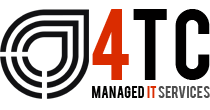Buying the Best Tools for Remote Working – Secure Remote Access
At the height of the pandemic, 49% of UK workers found themselves working remotely at least one day per week. The same figure for 2019 stood at just 12%, illustrating the dramatic culture change that was forced upon workplaces across the country.
Today, whilst many of us have returned to the office on a permanent basis, 22% of employees continue to work remotely at least one day per week, and 11% (roughly one in eight) report working from home exclusively: proof that the concept can endure when correctly implemented.
With benefits ranging from improved employee retention and enhanced work-life balance to reduced pressure on office space and a reduction in costly commutes, enabling remote work can be advantageous for employers and employees alike. However, to ensure your remote team remains motivated and productive it’s vital that they have access to the right tools and services.
At the heart of a workable remote working strategy is a means by which to provide secure, unhindered access to the data and services your remote team need, a concept known as ‘secure remote access.’ In this article we’ll look at some of the most popular options for providing secure remote access with consideration given to the advantages and drawbacks of each solution.
Remote Access Virtual Private Networks (VPNs)
Virtual Private Networks are one of the most popular ways to grant geographically dispersed employees access to corporate resources. VPNs can be configured to allow remote employees to access resources such as email services, enterprise software (scheduling tools, project management tools, CRMs etc) and data vaults without compromising the security of sensitive information.
A VPN extends the privacy afforded by an on-premise network to remote employees by encrypting all transiting data. Authorised end users log into the VPN using a client portal on their endpoint device and this establishes a protected, private connection between the user and the internal network, ensuring sensitive data is kept safe from prying eyes.
Advantages of Remote Access VPNs
- 24/7 Access to resources and data. Remote access VPNs provide round-the-clock access to resources. All that is required is an approved device and a dependable internet connection.
- Heightened Security. Remote access VPNs shield sensitive data against malicious interception. Particularly important when access resources using insecure networks such as public WiFi.
- Affordable for small businesses. With services offered on a per-user subscription basis, remote access VPNs are a cost-effective way to grant secure remote access to employees, with the ability to scale up and scale down provision in line with demand.
Disadvantages of Remote Access VPNs
- Careful management is required. Client software must be installed on every approved endpoint device, and must be regularly updated to ensure a high standard of security. Care must also be taken to ensure account credentials don’t fall into the wrong hands, as these could grant a hacker access to multiple network services in one fell swoop.
- High Latency (cloud-hosted VPNs). While affordable and convenient, cloud-hosted remote access VPN services can result in high data transfer latency if the service’s NAS (network-attached storage) is located a considerable distance from the company’s internal network.
Remote Desktops
Remote Desktop setups allow remote users to take command of a specific, office-based computer via an active internet connection. IT support is a common application of such technology, allowing technicians to diagnose issues and apply fixes to a machine without having to be physically present.
Using a client application installed on the remote device, users can access files and applications stored on an elected ‘host’ device as though they were sitting in front of it, with the service transmitting mouse and keyboard inputs from the client device to the host. In addition to desktop PCs, Remote Desktops can also be used to access servers and virtual server environments.
Advantages of Remote Desktops
- Cheap and Effective. Remote desktop services are a very affordable way to enable remote access to office-hosted apps and data. The setup requires no hardware to operate and services often feature encrypted connections for greater security.
- Familiarity. Remote desktops allow remote workers to access files and services via the desktop interface they’re familiar with.
Disadvantages of Remote Desktops
- The host machine must be turned on. The machine being accessed must be on and remain on for the duration of the session. It also cannot be used by another employee whilst the remote connection is active.
- ‘Data-heavy’ activities may perform poorly. Data-intensive activities such as video editing or graphic work may be clunky and unresponsive.
SD-WAN
While SD-WAN (Software-defined wide area network) is most often associated with medium to large companies seeking to connect multiple branch offices to their headquarters, the technology is increasingly being used to keep remote workers connected to the cloud-hosted and on-premise resources they need access to.
Wide area network (WAN) connections extend corporate networks over a large geographical area using numerous connectivity technologies, including MPLS, wireless data connections, broadband, VPNs and the internet, allowing employees to access the resources they need from any location. SD-WANs feature software which monitors the quality of these connections, ensuring data is routed via the most reliable and efficient pathway at all times.
SD-WANs not only connect remote users with office-hosted apps and data, they also link to cloud-hosted services including trusted SaaS providers for a full-optimised remote access experience often backed by SLA-defined performance level guarantees.
Advantages of SD-WAN
- Reliability. Because SD-WAN can route data via multiple connectivity pathways, there are almost always several failover options should one fail.
- Improved network performance. Software routes traffic via the most efficient connection for reduced latency, improved application performance and a superior end-user experience.
- Centralised management. Network managers benefit from a central command point known as an ‘SDN controller’ for convenient routing and policy management.
Disadvantages of SD-WAN
- Security. An SD-WAN should be supported by an array of security apparatus to protect the network form external threats. Intrusion on one machine could spread network-wide without the necessary precautions.
- Can be difficult and expensive to support. Setting up and maintaining SD-WAN solutions requires technical expertise that can place a heavy burden on small internal teams and contracting-in such support can often be expensive.
Software-as-a-service (SaaS)
Over the last decade, the ‘Cloud’ has transformed the way businesses access IT services and launch new tech projects, with software, infrastructure and development platforms accessible on a subscription basis via cloud service providers. Today, the Software-as-a-service marketplace features enterprise software for almost any conceivable business function, from marketing and HR to accounting and sales.
Cloud-hosted software combined with cloud storage can be a convenient, secure and low-hassle way to give remote employees access to the apps and data they need.
Microsoft 365 is perhaps the pre-eminent SaaS offering, featuring a broad suite of tools designed to empower remote workforces.
Advantages of SaaS
- Scalability. Unlike conventional software where upscaling might involve provisioning additional server capacity and acquiring additional licenses, SaaS providers typically allow new users to be added in a few clicks for a small additional monthly fee.
- Cross-platform integrations. Outdated legacy applications often leave data segregated, resulting in time-consuming and inefficient data handling. Today’s SaaS offering often feature extensive cross-platform integration and the ability to automate workflows across services for improved workplace productivity.
- Low-cost access to the best enterprise software. The SaaS model offers a compelling value proposition compared to traditional software licensing, with services often able to be provisioned for a single end user for a modest monthly fee.
- Zero Maintenance. SaaS providers maintain the software and ‘push’ new features and upgrades to users automatically. This reduces the management burden for internal IT teams.
Disadvantages of SaaS
- Lack of customisability. Compared to custom in-house applications and even locally-hosted proprietary software, SaaS products offer very little in the way of customisation potential.
- Data security remains your responsibility. While SaaS providers are responsible for maintaining the integrity and accessibility of their service, they are not responsible for the security of the data you store on it. Using a backup service to safeguard cloud-hosted apps and data is advisable, as is the use of secure authentication methods and antivirus protections to further safeguard data being accessed remotely.










